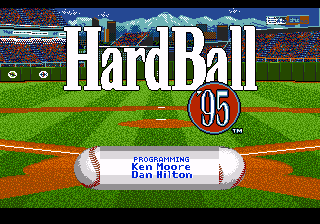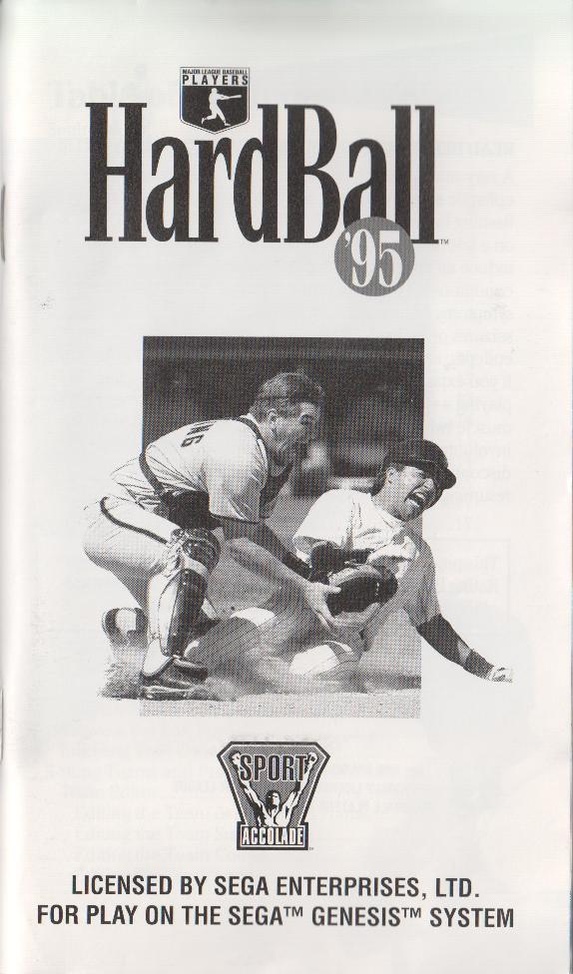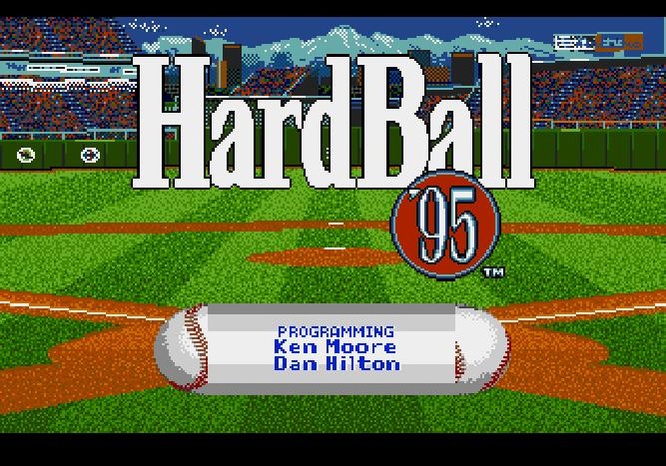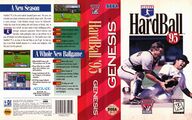HardBall '95
From Sega Retro
| HardBall '95 | ||||||||||
|---|---|---|---|---|---|---|---|---|---|---|
| System(s): Sega Mega Drive | ||||||||||
| Publisher: Accolade | ||||||||||
| Developer: Cygnus Multimedia Productions | ||||||||||
| Licensor: Major League Baseball Players Association | ||||||||||
| Genre: Sports (baseball) | ||||||||||
| Number of players: 1-2 | ||||||||||
|
This teeny-tiny article needs some work. You can help us by expanding it.
HardBall '95 is a baseball game for the Sega Mega Drive and a sequel (or update) to HardBall '94. It was only released in North America.
Contents
Production credits
- Developer: Cygnus Multimedia Productions, Inc.
- Programming: Ken Moore and Dan Hilton
- Original: MindSpan Technologies Corp.
- Artists: Alan Taylor, Tyler Lybbert, Ryan Wood, Lee Phung, Dallin Haws, Eric Stubbs, Eric Nunamaker, Dean Cranney, Cindi Adamson
- Music and Sound: Eric Nunamaker
- Director: Hal Rushton
- Executive Producer: Pam Levins
- Asst. Producer: Michael Person
- Testers: Tomi McNaughton, Randy Hauser, Rich Gangwish, Scott Barnes
- Manual Editor: Shirley Sellers
- Product Mktg. Mgr.: Daniel Jeung
- Programming: Ken Moore, Dan Hilton
- Art: Tyler Lybbert, Ryan Wood, Alan Taylor, Dallin Haws, Lee Phung
- Executive Producer: Pam Levins
- Original by: MindSpan
- Developed by: Cygnus Multimedia Productions
Magazine articles
- Main article: HardBall '95/Magazine articles.
Promotional material
Print advert in Electronic Gaming Monthly (US) #70: "May 1995" (1995-0x-xx)
Physical scans
| Sega Retro Average | |||||||||||||||||||||||||||||
|---|---|---|---|---|---|---|---|---|---|---|---|---|---|---|---|---|---|---|---|---|---|---|---|---|---|---|---|---|---|
|
| 72 | |
|---|---|
| Based on 5 reviews | |
Technical information
- Main article: HardBall '95/Technical information.
References
- ↑ VideoGames, "June 1995" (US; 1995-0x-xx), page 66
- ↑ 2.0 2.1 GamePro, "September 1995" (US; 1995-xx-xx), page 76
- ↑ File:Hardball 95 MD US Manual.pdf, page 3
- ↑ File:HardBall '95 MD credits.pdf
- ↑ 1700 igr dlya Sega, "" (RU; 2001-xx-xx), page 135
- ↑ GamePro, "November 1995" (DE; 1995-10-04), page 72
- ↑ Gamers, "November 1995" (DE; 1995-10-11), page 57
- ↑ VideoGames, "August 1995" (US; 1995-0x-xx), page 97
| HardBall '95 | |
|---|---|
|
Main page | Development | Magazine articles | Reception | Region coding | Technical information | |
| HardBall games for Sega systems | |
|---|---|
| HardBall! (1991) | Al Michaels Announces HardBall III (1993) | HardBall '94 (1994) | HardBall '95 (1995) | |
| HardBall 5 (unreleased) | |






